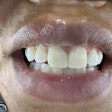A new case study examining an infant's neurobehavioral abnormalities and extremely high bisphenol A (BPA) concentration in the baby's mother suggests a link between the two (Environmental Health Perspectives, April 27, 2011).
The study was led by Sheela Sathyanarayana, MD, MPH, a pediatrician and an environmental health specialist at Seattle Children's Research Institute and an assistant professor of pediatrics at the University of Washington School of Medicine.
BPA, a synthetic, man-made chemical, is used in a wide variety of products, including dental sealants. BPA has estrogenic (hormone-like) properties. In animal studies, exposure to BPA early in life can lead to various abnormalities in the early development of the brain, behavior, prostate gland, and breast tissues.
In human studies, exposure to BPA early in life has not been studied extensively. However, one study found an association between BPA exposure in pregnancy and abnormal acting out behaviors in girls. In adults, increased BPA exposure has been associated with changes in hormone concentrations, sperm quality, and endometriosis.
In this case study, Dr. Sathyanarayana and co-investigators reported on a specific mother/infant pair from a larger study (Health Outcomes and Measures of the Environment) that examined BPA exposures in pregnant women, then examined their infants for neurodevelopmental outcomes. At 27 weeks of pregnancy, the mother had the highest reported urinary BPA concentration of anyone in the general population. She reported consuming canned foods and beverages, and using and microwaving plastic food storage containers consistently during this pregnancy time period.
All of these exposures could have led to her extremely high BPA concentration. Her infant had a normal newborn neurobehavioral exam but had many neurobehavioral abnormalities at the one-month study visit, including increased muscle tone, tremors, and abnormal movements. The child went on to have normal neurobehavioral assessments yearly from 1 to 5 years of age.
This case study confirms previous studies documenting multiple sources of BPA exposure in humans, the researchers noted. Additionally, it highlights the need for medical providers to be aware of the harmful effects of BPA exposures so they may counsel families appropriately about prevention. The study also identifies potential sources of BPA exposure that can be targeted to reduce exposures in the future.



















